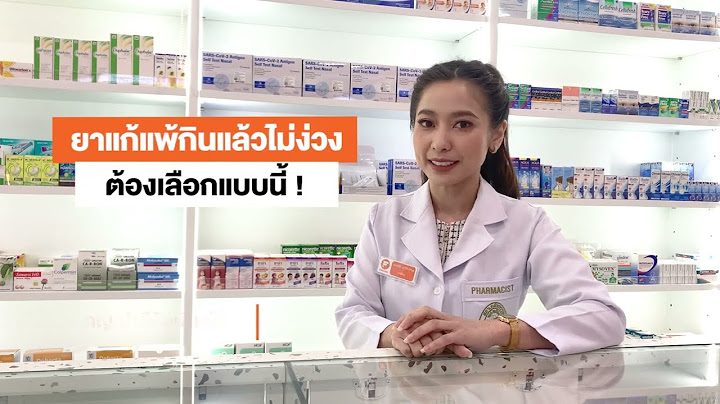STEP 7 (TIA Portal) helps you perform your engineering tasks intuitively and efficiently. Thanks to its integration in TIA Portal, STEP 7 offers transparency, intelligent user navigation, and straightforward workflows in every work and programming step. Functions such as drag & drop, copy & paste, and Auto Complete make work much quicker and easier. SIMATIC STEP 7 offers maximum user-friendliness, regardless of whether you‘re a beginner in the engineering field or already have many years of experience. For new users, the engineering is easy to learn and apply, whereas for experts, it’s fast and efficient.
Reduced engineering timesThanks to integrated functions and graphical configuration. Fast commissioningWith efficient error localization, thanks to integrated system diagnostics, real-time trace, and high-performance online functions. Short downtimesThanks to easy remote maintenance and diagnostics with web server and teleservice. Investment securityWith reusable components, libraries, and compatibility. SIMATIC STEP 7 (TIA Portal) SIMATIC STEP 7 in TIA Portal is the comprehensive engineering tool for configuring and programming SIMATIC controllers, whether PLC- or PC-based. SIMATIC STEP 7 Professional (TIA Portal) can be used to configure, program, test, and diagnose all generations of SIMATIC controllers. SIMATIC STEP 7 Basic (TIA Portal) is the price-optimized subset of STEP 7 Professional software that can be used both for engineering the SIMATIC S7-1200 Basic Controllers and for configuring the SIMATIC HMI Basic Panels, because WinCC Basic is part of the software package. You can configure an entire plant using a single graphical editor. The editor offers three views to ensure clear division of tasks. The network view shows graphical connections between devices, the device view shows the parameterization and configuration of the individual devices, and the topology view shows the actual interconnection of PROFINET devices. Network viewThe network view enables the configuration of plant communication. The communication links between individual stations are displayed graphically and very clearly. It’s possible to obtain a combined view of all network resources and components, link resources using drag & drop, and much more. Device viewThe configuration of racks and assigning of addresses etc. is performed in device view. All devices are represented in a photo-realistic way. When zoomed to at least 200%, IOs are displayed with the symbolic names or addresses. Useful functions are buffering of configured hardware modules and reuse with module clipboard, automatic readout of available hardware, full text search in the hardware catalogue with optional filtering. Topology viewFor PROFINET networks, the topology view offers the option of showing which ports are interconnected and communicating with one another during ongoing operation. By identifying, displaying, and monitoring the physical connections between devices on PROFINET IO, administrators can easily monitor and maintain even complex networks. SIMATIC STEP 7 (TIA Portal) provides powerful programming editors for programming SIMATIC S7 controllers. These editors offer functions such as drag & drop, project-wide cross-reference lists, Auto Complete, etc., and enable the efficient creation of user programs. Programming editors adapted to tasks and workflows provide the basis for the intuitive STEP 7 (TIA Portal) operating concept. Embedding the different editors in a common working environment ensures that all the data is available to users on a consistent basis and guarantees an overview of the project data at all times. LAD and FBDGraphical programming with Ladder and Function Block Diagram STEP 7 (TIA Portal) supports graphical programming languages and, in this way, ensures a significant increase in engineering efficiency when programs are created. The user-friendly, fully graphical LAD and FBD editors offer excellent clarity and fast navigation in the block editor, thanks to features such as opening and closing entire networks, showing and hiding symbols and addresses, convenience functions, and a calculate box that permits the direct entry of formulas with SIMATIC S7-1200 and S7-1500. SCLProgramming of complex algorithms The Structured Control Language (SCL) corresponds to the textual high-level language ST (Structured Text) defined in the IEC 61131-3 standard and fulfills base-level and reusability-level requirements according to PLCopen. SCL is particularly suitable for the high-speed programming of complex algorithms and arithmetic functions as well as for data processing tasks. The S7-SCL Editor offers features such as aids for structuring code, slicing for fast access to tag parts, exchange options, and much more. STLStatement List as a textual programming language* The Statement List (STL) textual programming language enables the creation of hardware-level runtime and memory-optimized user programs. Users are supported by a host of new user-friendly editing functions, including intelligent selection of symbols from PLC tags, databases, and local tags, a clear presentation of even complex program code, and various other convenience functions. *(No support for STEP 7 Basic) Programming of sequencers* Sequential Function Chart (SFC) is used for describing procedures with alternative or parallel sequencers. The sequencers are configured and programmed quickly and clearly in a standardized display mode (according to IEC 61131-3, DIN EN 61131). The process is described graphically and divided into individual steps with a manageable range of functions. Thanks to numerous convenience functions, sequencers can be easily and flexibly structured. In addition, online functions provide considerable time savings, particularly during the commissioning phase. *(No support for STEP 7 Basic.) Efficient error analysis, fast commissioning, and reduced downtimesSystem diagnostics is an integral part of STEP 7 and does not require an additional license. In the engineering phase, diagnostics is conveniently activated with just one click. When new hardware components are introduced, the diagnostic information is updated automatically via the engineering system (HWCN). Thanks to a real-time trace function, all user programs can be precisely diagnosed and optimized and, with the aid of online functions, a great deal of information can be retrieved and exchanged and projects updated. DiagnosticsSystem diagnostics outputs all relevant information on existing errors in the system. This information is automatically packaged in messages containing the following elements:
Efficient error analysis and rapid error localization using the new uniform display concept are available for the new controllers. The new uniform display concept enables identical visualization of error messages in TIA Portal, on HMI, on the web server, and on the display of the new CPU (S7-1500 only) as plain text information. Benefits of integrated system diagnostics:
The real-time trace functions for SIMATIC controllers enable precise diagnosis and optimization for all user programs. You can easily identify sporadic events in the system during commissioning and maintenance by visualizing the entire process using a real-time trace. The trace functionality offers:
STEP 7 (TIA Portal) supports numerous online functions:
Together with TIA Portal, integrated and scalable SIMATIC Technology automation solutions save valuable engineering time and guarantee maximum efficiency and flexibility.
The scalable and flexible motion functionality integrated in the SIMATIC S7-1500 supports the control of centrally or decentrally connected drives (analog and digital). PLCopen blocks are available for programming. Motion control technology objects (TOs) can be used for programming typical functions such as positioning (absolute and relative), speed control, referencing, and support for absolute encoders, and for testing and reusing them as often as desired. In addition to the control tasks, these technology objects include the communication with the converter and its parameterization. High-speed counter – for SIMATIC S7-1500 controllersThe high-speed counter for S7-1500 controllers enables the configuration, commissioning, and diagnosis of counter applications such as:
The high-speed counter is intended for use with various modules (TM Count/TM PosInput):
The following functions are available in STEP 7 (TIA Portal) for implementing continuous, discrete (pulse width modulation), and step controllers and for easy commissioning, thanks to automatic controller setting:
Siemens recommends SIMATIC Field PG programming devices as a powerful and rugged platform for STEP 7 Engineering Software, especially when an engineering station is also used for the commissioning, servicing, and maintenance of the automation system. However, any PC that meets the following requirements can be used. Supported Operating systems (64 Bit only)Windows 7 (64-bit)**
Windows 10 (64-bit)
Windows Server (64-bit)
*only for Basic Edition **not for "STEP 7 Basic/Professional and WinCC Professional" Compatibility Tool The Compatibility Tool is a function provided by the Siemens Industry Online Support with which you can select compatible software products or check the compatibility of existing configurations. All configuration and programming tools required for generating a safety-oriented program are integrated into the STEP 7 user interface and use a common project structure. Using the SIMATIC STEP 7 Safety Basic or STEP 7 Safety Advanced (TIA Portal) option, you can also take advantage of all the benefits of the TIA Portal for your fail-safe automation. To use this option package, a valid SIMATIC STEP 7 Basic or STEP 7 Professional license is required. STEP 7 Safety is the seamless integration of safety in TIA Portal. However, safety-oriented programs can still be generated using STEP 7 and Distributed Safety. Programs created with STEP 7 Distributed Safety can be migrated to TIA Portal at any time.
Get started now with SIMATIC STEP 7Today’s automation solutions must overcome a variety of challenges. To do this, they require high-performance software that is as efficient, flexible, and reliable as possible, both now and in the future. By choosing the right license for your individual application, you’ll keep your software cost-effectively up to date. STEP 7 Safety Advanced is delivered with a floating license for parameter assignment and programming of all SIMATIC Safety controllers and allows you to install the software on as many computers as you like. The number of existing licenses determines the number of computers the software can be used on at one time. A valid SIMATIC STEP 7 Professional License is required to use this option package. Other types of license for STEP 7 Safety can be found at the Industry Mall.
STEP 7 Safety Basic is delivered with a floating license for the failsafe S7-1200 F Basic Controllers and allows you to install the software on as many computers as you like. The number of existing licenses determines the number of computers the software can be used on at one time. Existing licenses for earlier versions of STEP 7 Safety Basic can be updated to the current version by means of an upgrade package. STEP 7 Safety Basic licenses can be upgraded with the aid of a Powerpack to STEP 7 Safety Advanced. A valid SIMATIC STEP 7 Basic or STEP 7 Professional License is required to use this option package. Other types of license for STEP 7 Safety can be found at the Industry Mall.
At siemens.com/simatic-licenses, you’ll find further information on topics like the Software Update Service (SUS) and Online Software Delivery (OSD), as well as on types of licenses and the administration of your software licenses using the Automatic License Manager TIA Portal Tutorial CenterIn TIA Portal Tutorial Center, you’ll find concentrated knowledge for your applications. The offering covers all important areas ranging from a general overview to the functions of TIA Portal, as well as technologies and applications such as motion control and energy management. Learn more SIMATIC STEP 7 options STEP 7 (TIA Portal) is already characterized by a comprehensive range of integrated functions. But for tasks beyond standard automation requirements, these functions can be expanded by using tailored options that can be seamlessly integrated into STEP 7 and TIA Portal, such as failsafe applications or technological tasks. Downloads and support SIMATIC STEP 7 (TIA Portal) at a glance TIA Portal in Industry Online SupportOverview of the most relevant documents and links Automate in 10 minutes or lessExperience how easily automation tasks can be performed in 10 minutes or less. Support ServicesWithin the framework of Online and Technical Support, Siemens Industry offers a wide range of services. Online Support, Technical Support... Spare Parts ServicesSiemens Industry's spare parts services are available worldwide and provide smooth and fast supply of spare parts – and thus optimal plant availability. SITRAIN - Digital Industry AcademyFurther education for all Siemens industrial products - directly from the manufacturer, individually, with the latest methods. |

กระทู้ที่เกี่ยวข้อง
การโฆษณา
ข่าวล่าสุด
การโฆษณา
ผู้มีอำนาจ
การโฆษณา
ถูกกฎหมาย
ช่วย

ลิขสิทธิ์ © 2024 th.apacode Inc.




























